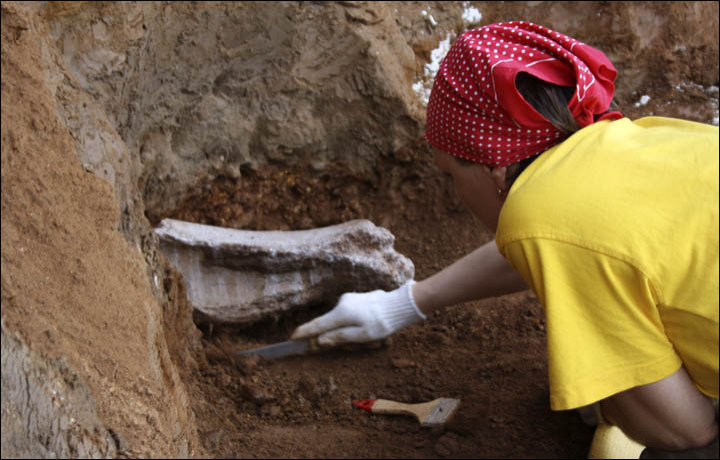Russian scientists close to finding full remains of largest ever mammoth

Russian paleontologists believe they are close to unearthing the first full skeleton of the biggest mammoth that ever lived 200,000 years ago.
A new expedition to excavate the remains of the steppe mammoth in Okhansky district of Perm region expects to speed up the process that began in 2013 and was halted due to bad weather.
It is expected to take another year by when the remains of the 'giant elephant' are expected to be found.
Already the Perm Local History Museum team has found parts of the tusks, occipital bones, hyoid bone fragments, fragment of the right scapula, ribs, vertebrae, jaw, teeth and more.
"At the moment, we have more than 50 steppe mammoth bones and hope to obtain a fairly full skeleton after we finish the excavations," said Tatiana Vostrikova, head of the expedition and deputy director of Perm Local History Museum.
Earlier finds of the steppe mammoth in Serbia and England were able to recover only 80-90% of the skeleton, reports the Siberian Times.
The steppe mammoth is an extinct species that inhabited northern Eurasia during the Middle Pleistocene period 600,000-150,000 years ago.
With a body height at shoulders reaching four metres in the latest fossil specimen, the steppe mammoth is believed to be the largest elephant that ever lived on earth. Its weight could reach almost 10 tonnes.
The species is thought to be the first stage in the evolution of the steppe and tundra elephants and an ancestor of the woolly mammoth of later glacial periods.
Evgeny Mashchenko, senior researcher at the Paleontological Institute of the Russian Academy of Sciences and scientific adviser to the expedition, said the latest discovery is 'of great scientific interest'.
He assesses the age of the Perm male mammoth when it perished to be about 45. The animals could live to around 60.
© Copyright IBTimes 2025. All rights reserved.





















